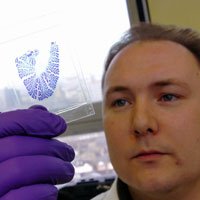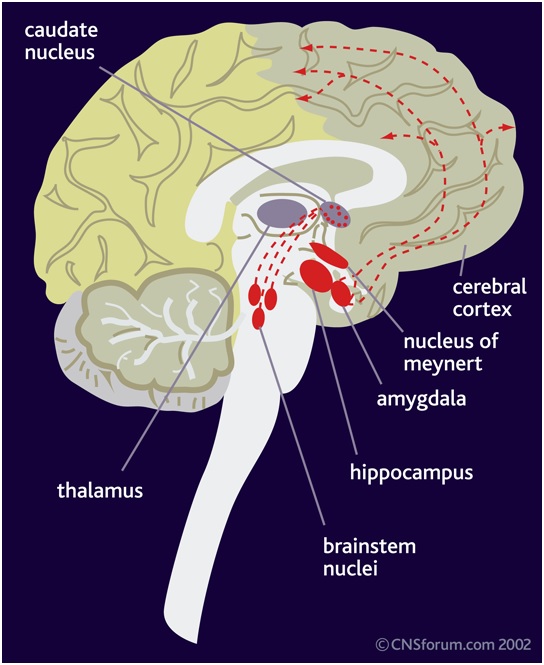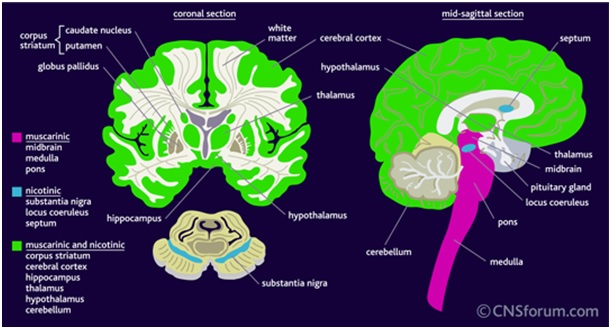Dr. Matthew Williams
Visiting research associate in neuroscience at the MRC clinical sciences centre at Hammersmith Hospital and The Insitute of Pyschiatry at Denmark Hill.
Much of the research on schizophrenia in recent years has focused on the causes of the psychotic symptoms, such as auditory hallucinations, paranoia and delusion. Whilst these are undoubtedly the more shocking and florid aspects of the illness, schizophrenia encompasses a more complex set of symptoms. The word schizophrenia itself translates as ‘broken mind’, the term coined by Dr. Eugen Bleuler in 1908, was intended to describe the fragmented thinking typical of the disorder. In addition to psychosis patients with schizophrenia often have decrease in motivation and enjoyment of relationships, sex and activities, unwillingness to leave familiar surroundings, changed sleeping patterns and social awkwardness and fear. Such an array of symptoms to do with cognition and emotional processes suggests multiple brain systems and regions are disrupted in this illness. The anatomical mediation of attention and cognitive involves a distributed neural system that includes the hippocampus, nucleus accumbens, basal forebrain, and prefrontal cortex.
The Nucleus Basalis of Myenert (NBM) is a key structure for investigation as it forms a connection between the limbic system, often thought of as the emotional processing region of the brain, and the cortex, where cognitive and executive functions are thought to be located. The NBM is the source of the cholinergic system, so-called as it describes the axons sending signals using the neurotransmitter acetylcholine to target neurons. These axons project in a looping pattern through the entire cortical surface, forming synaptic connections in specific cortical layers and regulating the activity of the small interneurons within these layers. This means that the acetylcholine system can effectively regulate the overall activity level of the cortex.
As with other neurotransmitter systems acetylcholine acts through specific receptors on the synapses target cells. The two receptor families for acetylcholine are the nicotinic and muscarinic families. Regions of the brain are functionally affected by what type of receptor they have. The nicotinic-only regions are in the basal ganglia, whilst the muscarinic-only regions are the brainstem and pons. However the overwhelming proportion of acetylcholinergic receptors are the mix of nicotinic and muscarinic types found throughout the cortex.
The function of the NBM is regulated by two major pathways, the serotonergic inputs from the raphe nuclei and the adrenergic inputs from the nucleus accumbens. Anti-depressant drugs, which act to increase the level of bioavailable serotonin at the synapse, have been prescribed for many serious disorders for decades. In recent years animal models of schizophrenia have shown that cortical muscarinic and nicotinic receptors are altered in concentration and quantity, suggesting that the symptomatology of schizophrenia may be affected by acetylcholinergic change as well as the well-documented downstream serotonergic and dopaminergic effects. Treatment of sufferers of schizophrenia with cholinesterase inhibitors such as donepezil, galantamine, and rivastigmine increase the intrasynaptic concentration of acetylcholine through inhibition of the enzyme acetylcholinesterase, which have been known to increase cognitive performance in dementia, but direct confirmation of this in schizophrenia patients is elusive, suggesting that the interaction of acetylcholine with the established changes due to serotonergic and dopaminergic distortion is more complex in this illness than previously thought. This has been recently shown by the use of galantamine in schizophrenia, which differs from other cholinesterase inhibitors as it is also a modulator upon the nicotinic receptors. This combined mechanism of action may be more beneficial in schizophrenia, and first add-on studies of galantamine have shown significant improvement in some aspects of cognitive function. Anticholinergic drugs have been reported to lead to worsening of positive symptoms and improvements of negative symptoms of schizophrenia, supporting the model of complex cortical interaction of multiple neurotransmitter symptoms.
Recently we have found that the NBM is altered in schizophrenia using pathological methods. Glial cells, a variety of cell types which support the neurons and synaptic connections within the brain, show changes across the central nervous system in many disorders. We found the acetylcholine-producing oval neurons of the NBM were swollen in schizophrenia. In addition there is recent evidence that the relative number of fibrillary type astrocytes to gemistocytic type in the NBM is decreased in schizophrenia, consistent with findings in other key structures within the brain. As fibrillary astrocytes are involved in regulating synaptic glutamate, an important regulatory neurotransmitter, this could imply that the inter-cellular singalling regulating the acetylcholine-producing cells is disrupted. Whilst the causes of this astrocytic change, and potential downstream glutamate change, is currently unknown, continuing research from several complementary avenues is revealing the importance of previously unexplored brain systems in the cause of serious illnesses such as schizophrenia.
Images are presented with full permission of CNSforum.com.





0 Comments